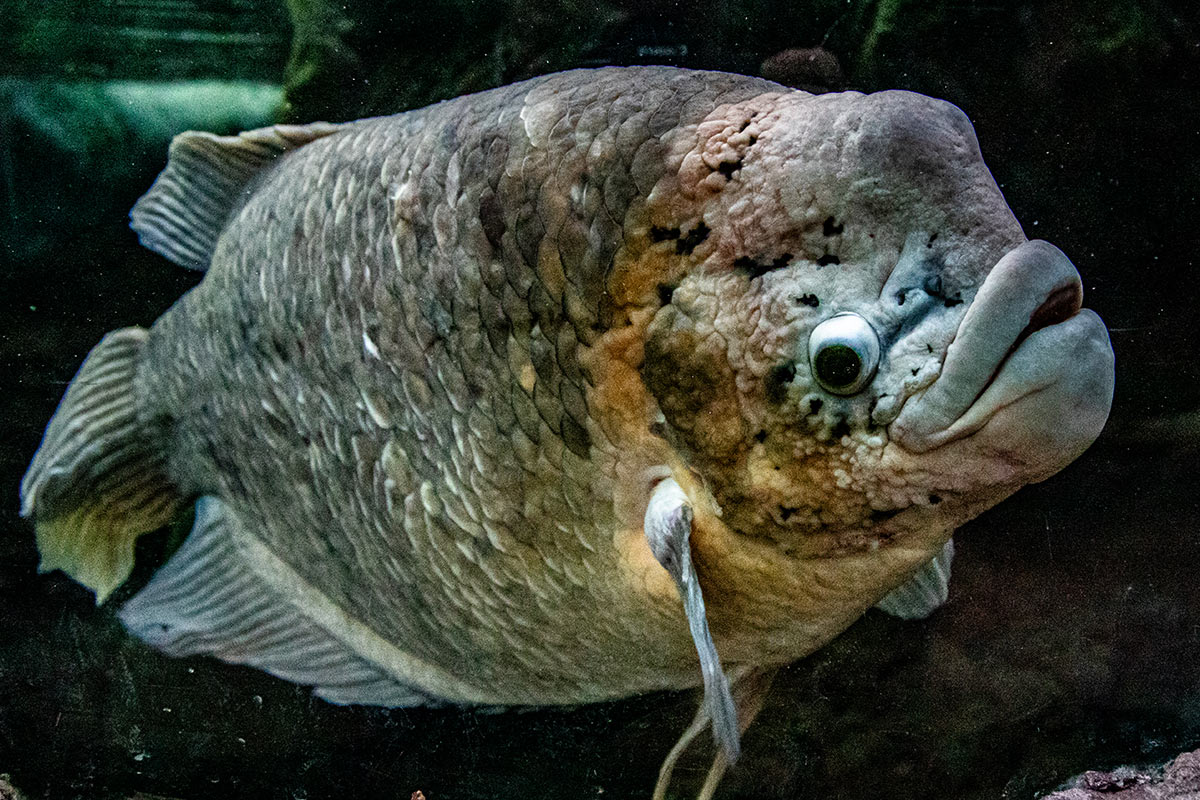Giant gourami
Osphronemus goramy
Order: Perciformes
Family: Osphronemidae
Genus: Osphronemus
Reaches a maximum length of 60 cm, which makes this the largest fish in the family. The body is deep, strongly compressed, and covered with ctenoid scales (thin, round scales with comb like projections (ctenii) on the exposed edge). The pelvic fins are long; the dorsal fin is positioned on the posterior of the body. Males can be distinguished by the dorsal and anal fins, which are more pointed, whereas the females' fins are more rounded. Many males also develop a noticeable bump on the forehead which becomes enlarged as they age and also darkens in colour. In fully mature breeding males it is almost black. Juvenile fish are brownish-red in colour with thin vertical bands. The bright colouration fades with age, turning dull grey.
Conservation Status: IUCN
Distribution
Southeast Asia. Believed to be endemic to Java, Borneo, Sumatra, and other East Indian Islands, but introduced to China, Philippines, etc. as a valued food fish.
Habitat
Lives in ponds, swamps, and rivers.
Diet
Gouramis are omnivorous; they eat a variety of plant and animal matter including aquatic weeds, fish, frogs, and earthworms.
Reproduction
They are well known as bubble or froth nesters. The males build the nests by taking air bubbles in their mouths, where they are coated with mucus to help the bubbles adhere to one another. The bubbles are then blown out to create the bubble nest at the surface of the water, where oxygen levels are the highest. They add detritus such as sticks, leaves, and plants to the nest. Spawning take place in mid-water. Before the eggs sink to the bottom, the male places them in the nest and guards them until hatching.
Adaptation
All gourami species have an auxiliary respiratory structure over each gill chamber called a labyrinth organ. This organ, which allows them to breathe air, is modified from the first gill arch, and consists of extensively folded, vascularized tissue. It occupies most of the gill chamber as well as an additional chamber above the gills. The gills of the gouramis are much reduced, and as a result, they will drown if they are not allowed access to the surface to breath air. The scientific term for fishes which need to breathe air is "obligate air breather". The labyrinth organ and bubble nest mode of reproduction are adaptations for living in stagnant tropical waters that typically have low oxygen levels. The name Osphronemus can be interpreted to mean "effective sense of smell", for in addition to the nares, the long ray of the pectoral fins acts as chemical sensors.
Threats to Survival
Possibly man, as it is prized as a food fish.















